Art Aboard E/V Nautilus: At-Sea Learning, Reflection, and Self-Care
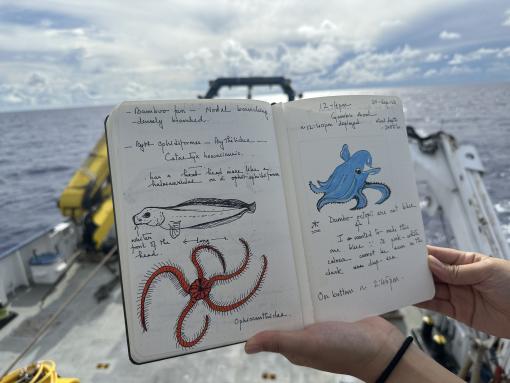
For many of the team members on E/V Nautilus, there is exploration of not only the deep ocean with physical observations and measurements, but also exploration of our own personal experiences through art. Explorers use different forms of art to learn, practice self-care, reflect, and process experiences. We asked some of the scientists participating in the Ala ‘Aumoana Kai Uli expedition to share how art has been a part of their exploration journey.
This blog was written by biological specialist Upasana Ganguly, Science Manager Taylorann Smith, Science Communication Fellow Cara Lin, supporting scientist Elsei Tellei, and Navigator Mia DeNardi.
Upasana Ganguly- Deep Sea Coral Biologist, PhD Candidate, University of Louisiana at Lafayette
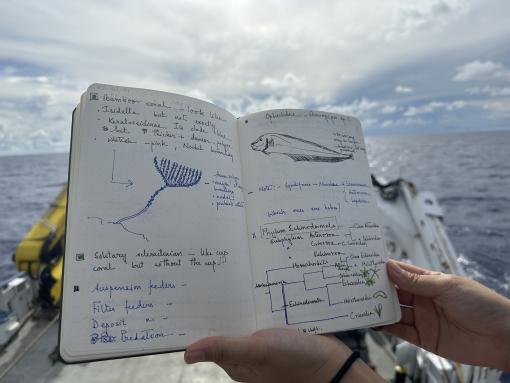
My relationship with art has been a sentimental one. As an otherwise boisterous outdoorsy child who loved exploring and spending hours looking for frogs, birds, insects, and many other creatures, art was one of the few activities I enjoyed doing that required me to sit in one place for a considerable duration. Over time I took up watercolor as my preferred medium. However, there came a point in my late teenage years when my parents insisted that I pause my painting pursuits to concentrate on school and finishing exams. My younger self had begrudgingly agreed to it but had also decided to not go back to painting “ever”. It took me years to realize that in this pause from art, I was actually depriving myself of something I cherished.
I have tried taking up painting again over the years and every time I have been disappointed knowing I cannot paint as well anymore as I once did. It is only in the last year or so that I have come to terms with this and have accepted that art, like anything else, requires practice and patience. Now, I actively try to paint, make small sketches, and teach myself new mediums of painting whenever I have the chance. It has been entirely rewarding.
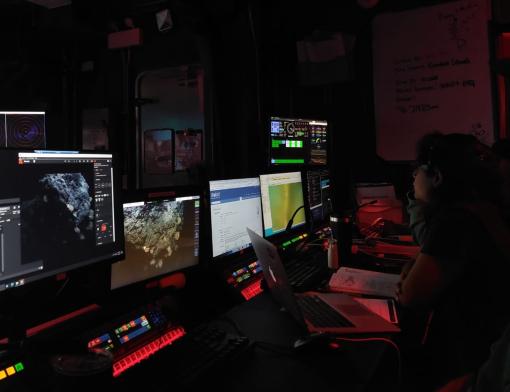
From a researcher’s perspective, I believe good illustrations are essential in natural sciences even in this age of great digital imagery and video data. Making simple sketches and diagrams has always helped me understand concepts and patterns, especially in biology. While exploring the deep sea on E/V Nautilus this has also been something I continued. It is my way of noting and remembering the magnificent coral colonies, sponges, sea stars, or fishes we have been lucky enough to observe in their natural habitats here at the Papahānaumokuākea Marine National Monument in the Central Pacific Ocean.
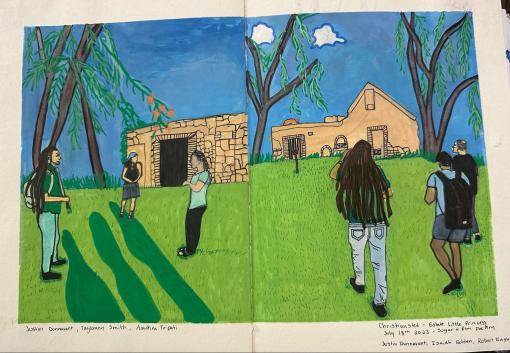
Taylorann Smith- Science Manager, Graduate Student, California State University- Los Angeles
Art has been a method of expression I’ve used since a young age to communicate and visualize my thoughts, reflections, dreams, and appreciation for life. While sailing on E/V Nautilus I tend to be very immersed in the incredible dives and operations that I rarely get time to create while sailing, but when I do, it’s very rewarding– soup for the soul if you will.
When I return home after an expedition or research trip, I like to spend time reflecting on the experience or something I took away from it. Ideally, I’d create a painting, drawing, or sculpture– anything that gives life to a memory I don’t want to forget– to commemorate the way the experience felt, or how it inspired me at the time.
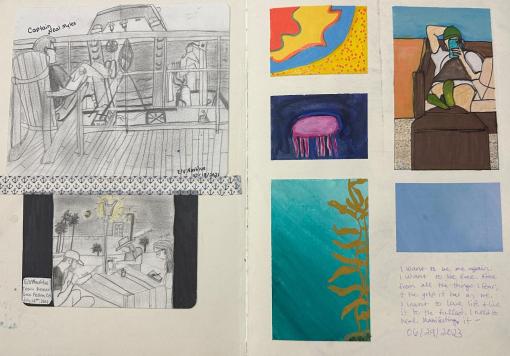
I have always desired to know where my ancestors lived and what their way of life was like before the slave trade, and I hope that they would be proud of how far I have come to sail as a scientist on such extraordinary expeditions. Whenever I am at a crossroads, I think of how those who came before me remained hopeful in unfathomably hard times. Creating art is an intentional way I express gratitude to my ancestors. I am quite literally painting their dreams into reality, I hope. Art continues to be an outlet to translate what I see, feel, and experience, on land and at sea.
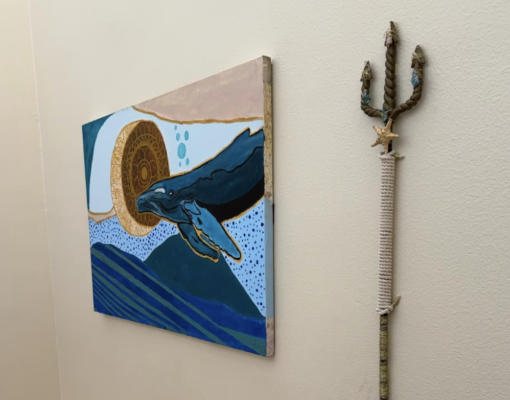
Cara Lin- Science Communication Fellow, Seagrass and Mangrove Conservation Coordinator at the Guam Coral Reef Initiative
Art has always been a way I have connected to the natural world around us, including the deep sea. One of my earliest memories is from elementary school when my sister shared a book about the bioluminescence of deep-sea fish with me. We were huddled together and sitting on the floor at home looking at the book while my sister explained that I could not yet read. It was a mind-blowing moment and I remember feeling so shocked and amazed that animals could live in such a different world of dark cold water and create their own light. At that time I didn’t even fully realize how deep and vast the ocean was, and how challenging of an environment it could be to live in and explore. It changed my whole understanding of life on the planet and was part of my inspiration to explore and learn about the diversity of biomes on our planet.
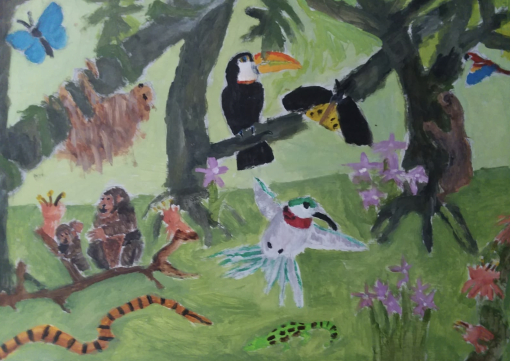
With a limited ability to travel, a lot of my exploration and learning was through books, photography, and art. To connect with the deep sea and other ecosystems and organisms I expressed my curiosity for them through art while also learning about these different habitats. My paintings from elementary school show somewhat unrealistic scenes because I loved to emphasize the diversity of life and relationships between the animals, in the paintings the predators are feeding and there are different species of plants and animals. I didn’t know at the time, but this initial interest in connections would grow into other interests in the fields of ecology, sustainability, and environmental education.

As I grew older I continued to use art as a way to convey my appreciation for the world, being inspired by plankton, mammals, amphibians, places, people, and culture. I have to thank my art teacher, June Adinolfi, who gave me the space to explore my own interests, paint what inspired me and helped bring the visuals to life. My parents and siblings have also been a wonderful support for art, creativity, and learning. I am very grateful for the support I received and although I am not an experienced artist I am also glad to have been able to run some art workshops during my current work at the Guam Coral Reef Initiative for students to hopefully also explore their connections to nature as well.
Now as an adult, I also try to find time to practice self-care, express my love for our natural world, and explore meaningful moments and emotions through art and creativity. While on E/V Nautilus I haven’t been able to draw or paint much during the expedition but I am taking home so many sources of inspiration. This past month was about not only exploring the science of the deep sea and its creatures, but also the history, community, and our relationships with the ocean while traveling in such a culturally and historically significant place as Papahānaumokuākea Marine National Monument. I will be spending a long time reflecting on my learning journey making more art back at shore. Watching the stars and the light of sunrises and sunsets over the waves filled me with an immeasurable sense of gratitude and a vibrant feeling of joy to be a part of this larger world.
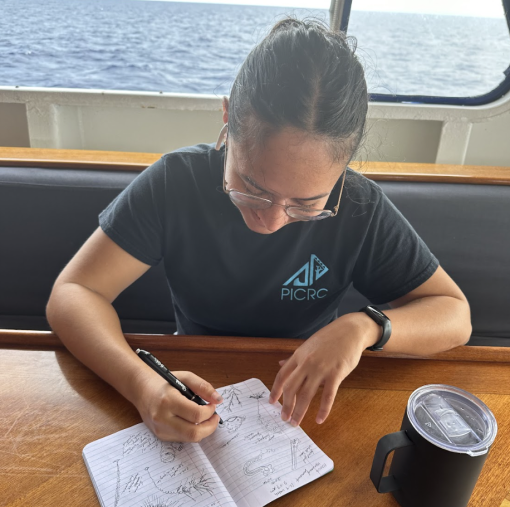
Elsei Tellei- Supporting Scientist, Researcher at Palau International Coral Reef Center
The great symmetry between art and science is that both ask you to make observations of the world, and then apply your own interpretations to them. I’ve had art in my life longer than science, so I believe that my experiences growing up as a budding artist gave me valuable skills to be the scientist I am today. Using quick illustrations as a form of notetaking while sitting in the control van during ROV dives really helps me notice details like shapes and textures on organisms, and helps me recall observations better. It’s also a great way to pass on what we had seen during the dive to our next watch!
If anyone is interested in seeing more of my artwork, I post somewhat regularly on Instagram at the handle @tiuladokow or on Facebook under Tiuladokow Artwork.
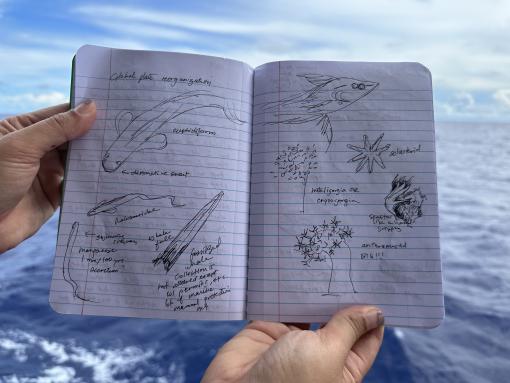
Mia DeNardi- Navigator
I was first introduced to NautilusLive.org at home during the COVID-19 pandemic while I was not in the office. I watched hours of footage and was quickly hooked to have it streaming in the background! It inspired me to make some art and I drew this picture to capture some of the creatures I was learning about. A lot of them I had never heard about before, but now on this expedition I’ve been able to see all of these organisms in real time and even help point them out. It has been great to be on watch with Upasana and the rest of our team watching and learning how to identify these organisms.
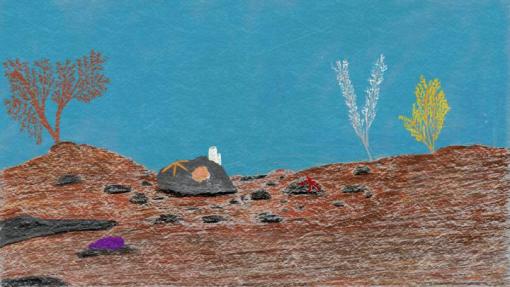
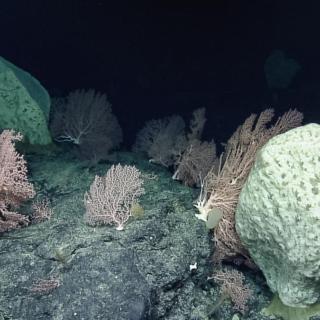
Ala ʻAumoana Kai Uli in Papahānaumokuākea Marine National Monument
Ocean Exploration Trust and partners will conduct a telepresence-enabled expedition to explore unseen deep-sea habitats aboard E/V Nautilus with ROV and seafloor mapping operations in the Papahānaumokuākea Marine National Monument (PMNM) focused on the largely unexplored northwestern section of the Monument.



